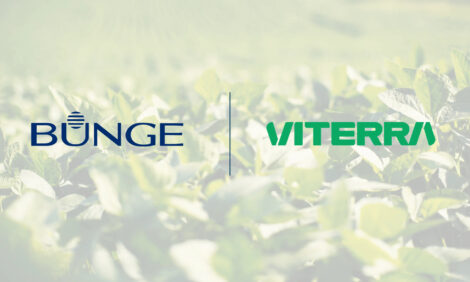



Influenza Vaccine Multiplies In Face Of Pandemic
GENEVA - Recent scientific advances and increased vaccine manufacturing capacity have prompted experts to increase their projections of how many pandemic influenza vaccine courses can be made available in the coming years.
Last spring, the World Health Organization (WHO) and vaccine manufacturers said that about 100 million courses of pandemic influenza vaccine based on the H5N1 avian influenza strain could be produced immediately with standard technology. Experts now anticipate that global production capacity will rise to 4.5 billion pandemic immunization courses per year in 2010.
"With influenza vaccine production capacity on the rise, we are beginning to be in a much better position vis-à-vis the threat of an influenza pandemic," Dr Marie-Paule Kieny, Director of the Initiative for Vaccine Research at WHO, said today. "However, although this is significant progress, it is still far from the 6.7 billion immunization courses that would be needed in a six month period to protect the whole world."
"Accelerated preparedness activities must continue, backed by political impetus and financial support, to further bridge the still substantial gap between supply and demand," she said.
This year, manufacturers have been able to step up production capacity of trivalent (three viral strains) seasonal influenza vaccines to an estimated 565 million doses, from 350 million doses produced in 2006, according to the International Federation of Pharmaceutical Manufacturers & Associations. According to experts working in this field, the yearly production capacity for seasonal influenza vaccine is expected to rise to 1 billion doses in 2010, provided corresponding demand exists.
This would help manufacturers to be able to deliver around 4.5 billion pandemic influenza vaccine courses because a pandemic vaccine would need about eight times less antigen, the substance that stimulates an immune response. Vaccine production capacity is linked to the amount of antigen that has to be used to make each dose of the vaccine. Scientists have recently discovered they can reduce the amount of antigen used to produce pandemic influenza vaccines by using water-in-oil substances that enhance the immune response.
The progress was reported Friday at the first meeting of a WHO Advisory Group on pandemic influenza vaccine production and supply.
The Global Action Plan Advisory Group, an independent, international committee of 10 members, met at WHO headquarters one year after eight new strategies to increase pandemic influenza vaccine were identified and published in the WHO Global pandemic influenza action plan to increase vaccine supply.
At the Advisory Group meeting, other progress on the Global Action Plan was discussed. WHO reported it is setting up a training hub that would serve as a source of technology transfer to developing countries.
The Advisory Group also discussed a new business plan which assessed options for further increasing vaccine production capacity and reviewed priority next steps. The three most valuable options include continuing to promote seasonal influenza vaccine programmes, supporting the industry to sustain production capacity beyond seasonal demand and enabling some vaccine production facilities to change, at the onset of a pandemic, from producing inactivated vaccines to live attenuated vaccines. Due to the higher yields obtained with live attenuated influenza vaccine technology, facility conversion could, by 2012, bridge the expected supply-demand gap and produce enough vaccine to protect the global population within six months of the declaration of a pandemic.
Further Reading
|
|
- View the Global Pandemic Influenza Action Plan To Increase Vaccine Supply [pdf 510kb] clicking here. |











